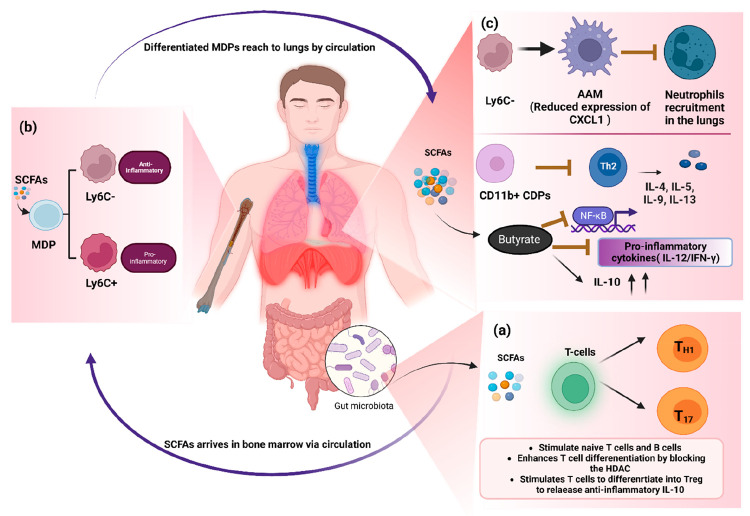Figure 3.
Schematic diagram showing the major communications between the gut–lung axis via circulating SCFAs that are released by gut microbiota and their subsequent effect on the immune system. (a) Formation of SCFAs (such as butyrate, propionate, and acetate) from the gut microbiota metabolism in the cecum and colon, and the general role of SCFAs on the differentiation of T-cells. (b) SCFAs can reach bone marrow via circulation in the blood, where SCFAs have a prominent role in the hematopoiesis of MDPs and their differentiation into the CDPs, and (c) subsequently, precursors DC inhabit the lungs and transforms into the CD11b+ DCs which blocks the Th2 cell activation, and enhance the polarization of the CDPs into the LyC6-monocytes that increase the activation of anti-inflammatory macrophages in a GPR41-dependent manner (thus, AAM has an important role in anti-inflammation by reducing the infiltration of the neutrophils in the lungs), and butyrate may also block the NF-κβ transcription factor and pro-inflammatory cytokines (IL-2, IFN-γ) and elevate the level of anti-inflammatory cytokines (IL-10). (GM – Gut microbiota, MDPs – Macrophage and dendritic progenitors, CDPs – Common DC progenitors, AAM – Alternatively activated macrophages) (Created with https://biorender.com/).

